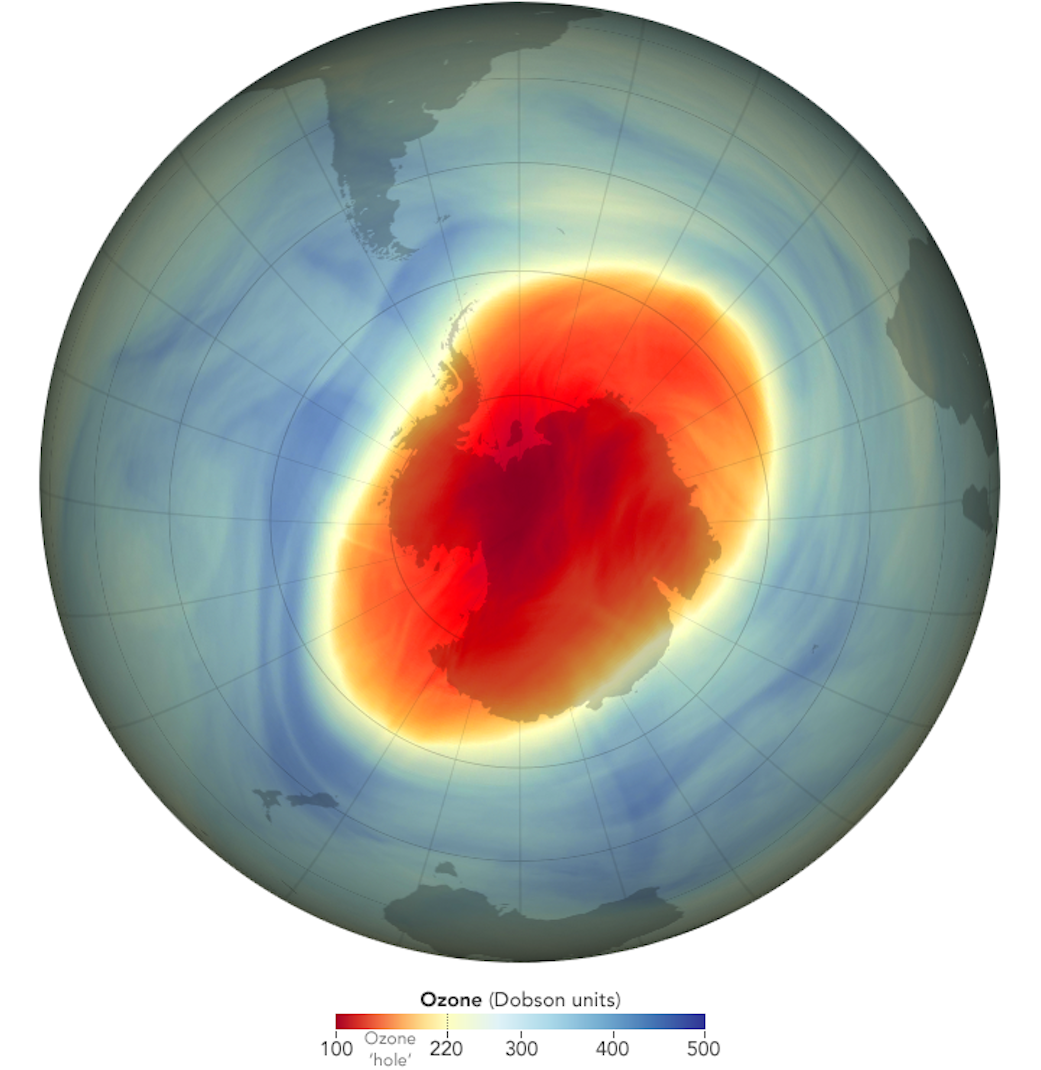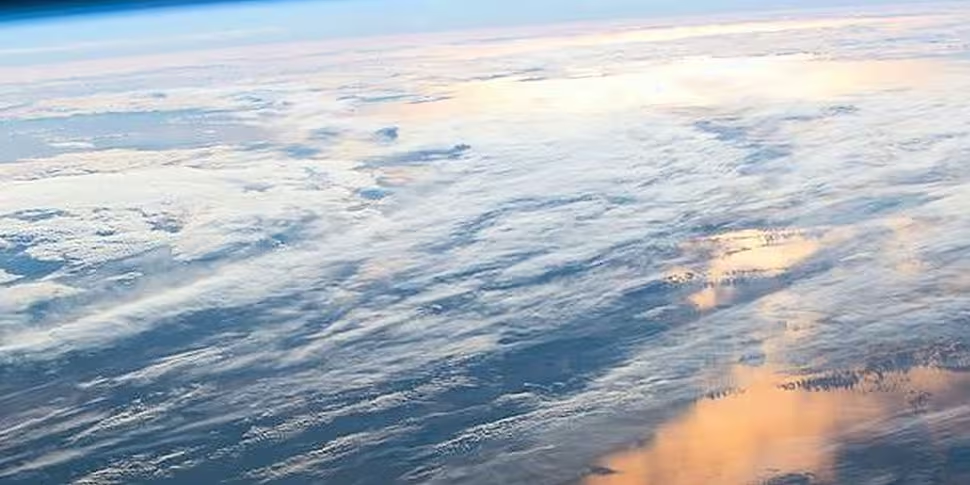The Earth's protective ozone layer is set to recover within four decades, according to a new assessment backed by the United Nations.
The UN-backed panel of experts said there has been a phase-out of nearly 99% of banned ozone-depleting substances.
This has led to "the notable recovery of the protective ozone layer in the upper stratosphere and decreased human exposure to harmful ultraviolet (UV) rays from the sun," the UN said.
The assessment found that if current policies remain in place, the layer is expected to recover to 1980 values by 2040.
There will be different ranges for different areas, with recovery over the Antarctic expected by around 2066, and by 2045 over the Arctic.
 The size and shape of the ozone hole over the South Pole in October 2022, when it reached its single-day maximum extent for the year. Picture by: NASA Earth Observatory image by Joshua Stevens
The size and shape of the ozone hole over the South Pole in October 2022, when it reached its single-day maximum extent for the year. Picture by: NASA Earth Observatory image by Joshua StevensVariations in the size of the Antarctic ozone hole - particularly between 2019 and 2021 - were driven largely by meteorological conditions.
Nevertheless the Antarctic ozone breach has been slowly improving in area and depth since the year 2000, it added.
The Montreal Protocol was signed in September 1987 to regulate the consumption and production of nearly 100 man-made chemicals, known as 'ozone-depleting substances'.
An additional agreement in 2016, known as the Kigali Amendment, required a phase-down of the production and consumption of some hydrofluorocarbons (HFCs).
HFCs do not directly deplete ozone, but are powerful gases which contribute to global warming and accelerate climate change.
'Precedent for climate action'
The panel said that it is estimated the amendment will avoid another 0.3-0.5°C of warming by 2100.
“The impact the Montreal Protocol has had on climate change mitigation cannot be overstressed,” Meg Seki, Executive Secretary of the UN Environment Programme's Ozone Secretariat, said.
“Over the last 35 years, the protocol has become a true champion for the environment.
"The assessments and reviews undertaken by the Scientific Assessment Panel remain a vital component of the work of the protocol that helps inform policy and decision-makers," she added.
Good news from #AMS2023: The ozone layer is on track to recover within four decades.
Press release ➡️ https://t.co/htPbNDJ9VU
Executive summary ➡️ https://t.co/yO6o2dVOd3
Partners 🤝🏽 @UNEP, @NOAA, @NASA, @EU_Commission pic.twitter.com/03FY2TQHPo— World Meteorological Organization (@WMO) January 9, 2023
"Ozone action sets a precedent for climate action," WMO Secretary-General Petteri Taalas added.
"Our success in phasing out ozone-eating chemicals shows us what can and must be done - as a matter of urgency - to transition away from fossil fuels, reduce greenhouse gases and so limit temperature increase".
The panel cautioned against the use of a potential method to reduce climate warming by increasing sunlight reflection.
For the first time, they examined the potential effects on the ozone arising from the intentional addition of aerosols into the stratosphere - known as a stratospheric aerosol injection (SAI).
They warned that an "unintended consequence" of this was that it "could also affect stratospheric temperatures, circulation and ozone production and destruction rates and transport."









